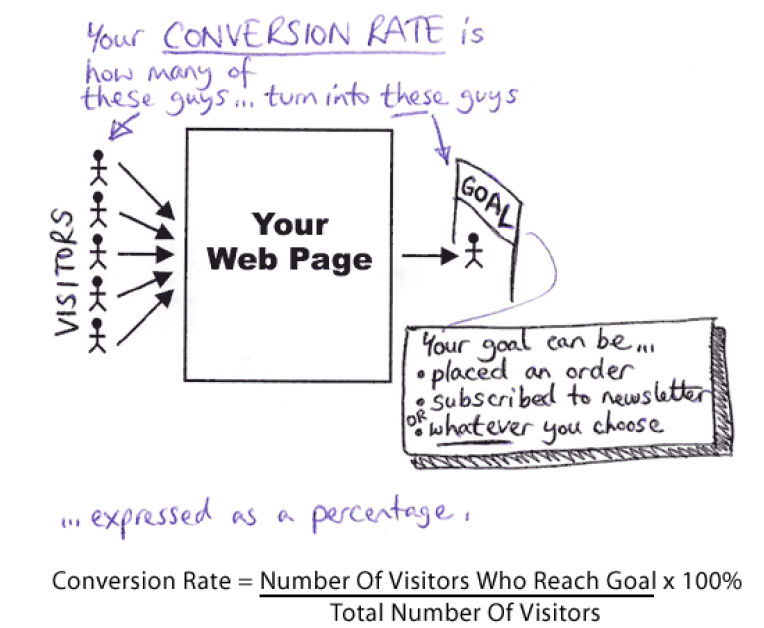Welcome back to our series on the ROI of UX. If you missed the first part you can find it under the UX Daily tab on our website. Today, we’re going to look at a specific metric and how it might help you in your quest to show value in your work to the top brass:
It’s a digital world and as the high street slowly evaporates in parts of the West; retail online has become the most important part of many company’s sales strategies. The user experience of the web presences these companies use will determine whether people where people arrive on the site, how many arrive and most importantly how many people who came to the site bought something. A conversion rate is simply the ratio of visitors to purchasers.
e.g. Total Purchasers/Total Visitors x 100 = Conversion Percentage

Author/Copyright holder: Stefson. Copyright terms and licence: CC BY-NC-ND 2.0
Before You Begin the Project
If your project is designed to increase conversion rates. It’s a good idea to know what those rates are now. You should be able to work out this number based on analytics from the customer’s site.

You might also want to know the average profit or average spend per customer. Why? Because if you double the conversion rate but halve the profitability of each customer – you haven’t actually improved anything, the client still makes the same money. In fact, it may even be worse, in that the client now has to do twice the work (in shipping, storage, etc.) to make the same money.
If you know your baseline; you can then see if you’ve made a meaningful difference. Without that baseline you simply can’t demonstrate value in your UX work.
During the Project
You need to know how much the work on the project costs. It might be tempting to take just the UX costs and use them for ROI but in reality; that’s not the way it works. A profit on the UX work but a loss on the project as a whole is not very valuable to a business. So you need to take the total investment as your figure to base ROI (or not) upon.
After Implementation
You might want to give it a few days (or even weeks) before you take your next sample; this enables your changes to have taken effect and for them to have taken effect in search engines, etc. too. Now it’s time to re-examine the conversion rates and average profits/revenue per user.
Let’s say that the original site was converting at 5%, that it received 1000 visitors a day, and that the average profit per conversion was $50. That means that the site was making 50 sales a day and a total profit of $2,500.
You spent $100,000 on upgrading the website including all elements of the project not just UX.
You’ve measured the statistics again and are pretty confident that they’re robust after measuring several times. You now have a conversion rate of 10%, your visitor numbers have dropped a little – you only get 800 visitors a day now, and the average profit per conversion has increased by 10% to $55. That means the site is now making 80 sales a day and a total of $4,400 in profit a day.

You spent $100,000. How long does it take for this to pay for itself? $4,400 - $2,500 is $1,900 of additional daily profit. It takes nearly 53 days for the site to pay for the improvements and you feel confident that these numbers will hold for at least 6 months. That’s approximately 180 days. Subtract 53 from 180 and you have 127 days of profit left. That’s a total ROI of 127 x $1,900 = $241,300.
Congratulations! You have delivered ROI.
Now, things aren’t actually this simple in real life and later on in this series we’ll show you how to make your ROI calculations a little more robust than this one. See you tomorrow.
Hero Image: Author/Copyright holder: Luca Mascaro. Copyright terms and licence: CC BY-SA 2.0






